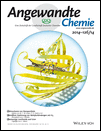Supercapacitive Swing Adsorption of Carbon Dioxide†
The DOE ARPA is gratefully acknowledged for supporting this work (DE-AR-000026).
Abstract
An electrical effect, the supercapacitive swing adsorption (SSA) effect is reported, which allows for reversible adsorption and desorption of carbon dioxide by capacitive charge and discharge of electrically conducting porous carbon materials. The SSA effect can be observed when an electrically conducting, nanoporous carbon material is brought into contact with carbon dioxide gas and an aqueous electrolyte. Charging the supercapacitor electrodes initiates the spontaneous organization of electrolyte ions into an electric double layer at the surface of each porous electrode. The presence of this double layer leads to reversible, selective uptake and release of the CO2 as the supercapacitor is charged and discharged.




